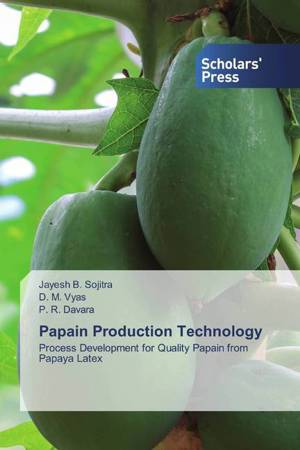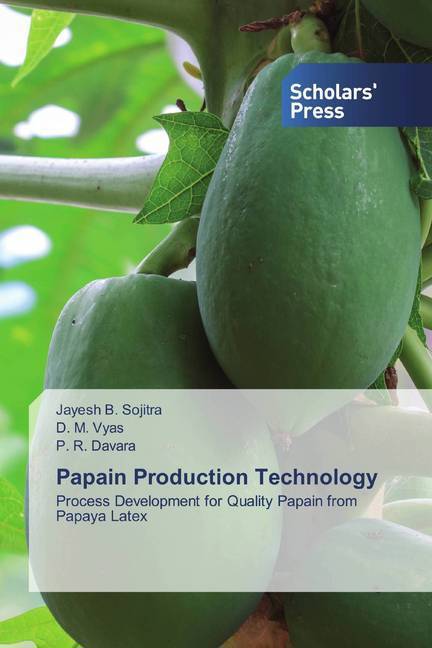
- Afhalen na 1 uur in een winkel met voorraad
- Gratis thuislevering in België vanaf € 30
- Ruim aanbod met 7 miljoen producten
- Afhalen na 1 uur in een winkel met voorraad
- Gratis thuislevering in België vanaf € 30
- Ruim aanbod met 7 miljoen producten
Papain Production Technology
Process Development for Quality Papain from Papaya Latex
Jayesh B. Sojitra, D. M. Vyas, P. R. Davara
Paperback | Engels
€ 59,45
+ 118 punten
Omschrijving
The latex present in the young fruits of papaya and other parts contains two proteolytic enzymes, papain and chymopapain. A study was undertaken to find out changes, occurring during storage of raw and pre treated latex at different temperature and packaging material, drying of latex by different drying methods and its storage under different temperatures and packaging materials. The freshly extracted latex was dried using hot air oven, fluidized bed dryer, vacuum oven and solar dryer at different drying temperatures. The vacuum oven drying at 60 oC drying temperature and 300 mm Hg pressure was found to be best in respect of colour, texture of and papain activity (494.88 TU/mg) followed by fluidized bed drying at 60 oC (482.32 TU/mg) and hot air oven drying at 50 oC (466.69 TU/mg). The papain activity of the samples dried by solar drying method was 399.94 TU/mg, which was about 19% lower than the activity of the sample dried at 60 oC in vacuum oven. The lowest reduction in papain activity was found in the samples packed in aluminum foils followed by the samples packed in glass containers .
Specificaties
Betrokkenen
- Auteur(s):
- Uitgeverij:
Inhoud
- Aantal bladzijden:
- 112
- Taal:
- Engels
Eigenschappen
- Productcode (EAN):
- 9786138931799
- Uitvoering:
- Paperback
- Afmetingen:
- 150 mm x 220 mm

Alleen bij Standaard Boekhandel
+ 118 punten op je klantenkaart van Standaard Boekhandel
Beoordelingen
We publiceren alleen reviews die voldoen aan de voorwaarden voor reviews. Bekijk onze voorwaarden voor reviews.










